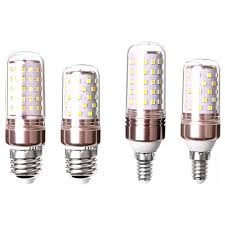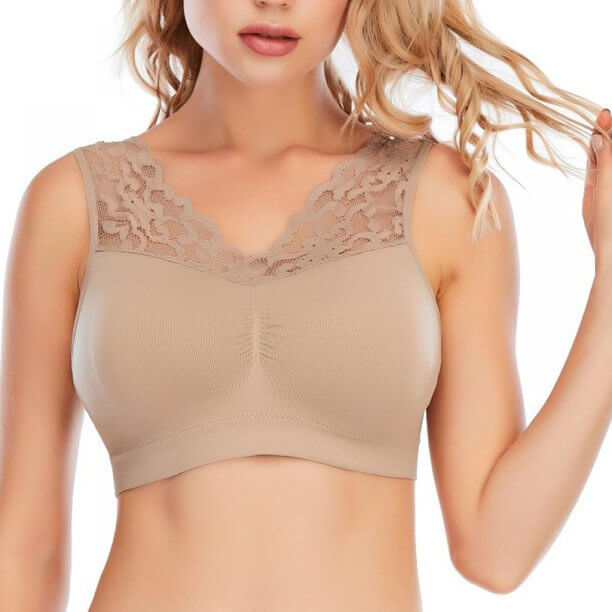Corn Cob Light Bulbs, an Overview

The name Corn Cob is given to these bulbs due to their design and appearance. When you look at a corn cob light bulb, it looks like the corn on the cob. The bulb is a tube/cob that contains square light diode lines on all sides. The best corn cob light bulb has around 80 to 180 individual lights on the cob. The number of LED lights varies with the size and style of the corn cob bulb.
The corn cob bulbs are designed as the HID lamps, and metal halide bulbs substitute. For areas like where the regular A19 bulbs fail to illuminate, the corn cob bulbs are most effective. Corn cob lights are ideal for areas like parking lots, garage, house exterior, street lighting, and high bay lighting.
Benefits of Corn Cob Light Bulbs
If you are not convinced why you should be investing in the best corn cob light bulb, there are some compelling reasons for you:
1. Energy Efficient:
In contrast to HID lamps or traditional incandescent light bulbs, corn cob bulbs are highly energy efficient. They reduce your utility bills notably. If you want to save money on electricity bills without compromising the illumination, switch to led cob bulbs. It’s only a one-time investment that will save your money in the long run.
2. Super High Brightness:
One of the reasons why cob-led lights are gaining massive popularity among the residential and commercial sectors is the high brightness. In comparison to other lighting options, the corn cob led lights to provide high brightness. Moreover, these led bulbs stay brighter longer where standard incandescent bulbs dim after few days.
3. Longer Lifespan:
There is a reason why corn cob bulbs are considered the best one-time investment. It’s because they are durable and long-lasting. Unlike most lighting options, you don’t need to replace these bulbs now and then.
4. Minimal Heat Dissipation:
Another thing that makes the corn cob led lights better than other lighting options is that cob bulbs are cooler. Although the bulbs emit some amount of heat, places they still stay cool. It means these bulbs are safe and reduce the risk and temperature rise.
How To Choose The Best Corn Cob Light Bulb?
With increasing popularity, there are quite a several corn cob-led bulbs available in the market. The bulbs are available in different styles and sizes and range from medium to high prices. All of this makes it overwhelming for people to choose the best corn cob light bulb.
Here are some things that may help you find the best corn con light bulb for your need:
- The Bulb Base
The corn cob bulbs are manufactured with two base options, one E26, and E39. The E26 bulbs have a medium Edison or one-inch Edison screw. It means that E26 cob bulbs have the standard base. The traditional bases make them ideal for residential areas.
On the other hand, the E39 bulbs are the Mogul Edison Screw or Goliath Edison Screw. These bulbs are used in industrial and commercial areas including farms, factories, warehouses and barns.
- Lumens
Another measure for choosing the best corn cob light bulb is to check the lumens. Lumen is the unit used to measure the brightness of a bulb. This is different from Watts. As residential, commercial, and industrial areas require different brightness levels, therefore it is necessary to check the bulb lumen before purchasing.
- Light Color
Though an important factor for choosing any kind of light bulb, many people often ignore this. The light colour is as important as the price of the bulb. Just like other lighting options, cob bulbs also come in different colours including 3000K, 4000K, 5000k, 5700K, and 6500K. You can easily select the right colour and temperature according to the area you wish to install the bulbs.
4. The Bulb Fitting
Due to the larger sizes, corn-led bulbs require more space as compared to other bulbs. These bulbs require enough space to dissipate heat and cool off. When buying the cob bulbs, always consider the bulb fittings and choose accordingly.
5. Bulb Fixtures
Just like the bulb fittings, the fixtures are also essential. In comparison to standard bulbs, cob light bulbs require enclosed fixtures. These bulbs are safer in enclosed fixtures. Look for cob LED light bulbs that come within enclosed fixtures. Many manufacturers manufacture cob bulbs in enclosed fixtures that are safer for commercial, industrial as well as residential areas.
6. Voltage:
The last but not the least thing to focus on when buying the best corn cob light bulb is the voltage. It is an obvious fact that all bulbs have different voltages. That’s the case for corn-led light bulbs as well. The most common voltage option for cob bulbs includes 250-W and 120-V. The E26 screw bulbs usually have the 120-V and are common in households. While the 250-W bulbs have the E39 screw/base that makes them ideal for industrial and commercial use.
The Bottom Line!
If you are thinking to invest in the cob corn LED light bulbs, then don’t waste any further minutes and just go for it. Once you will install the cob bulbs, you will notice a significant difference in brightness and energy efficiency. Corn cob bulbs are no doubt the future of residential and commercial lighting systems. Although these bulbs might be a little expensive than standard light bulbs, it is worth spending the money on corn cob light bulbs.




